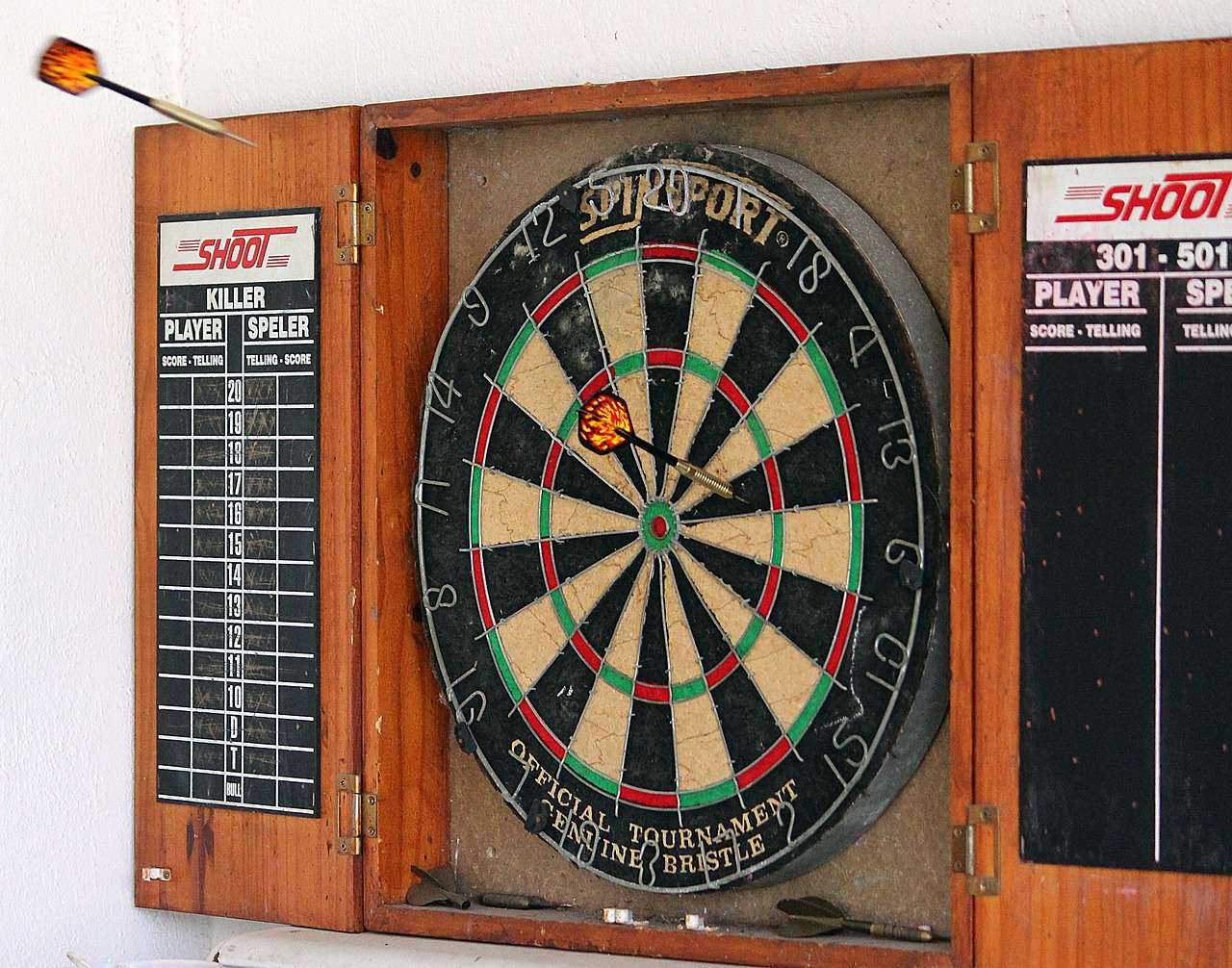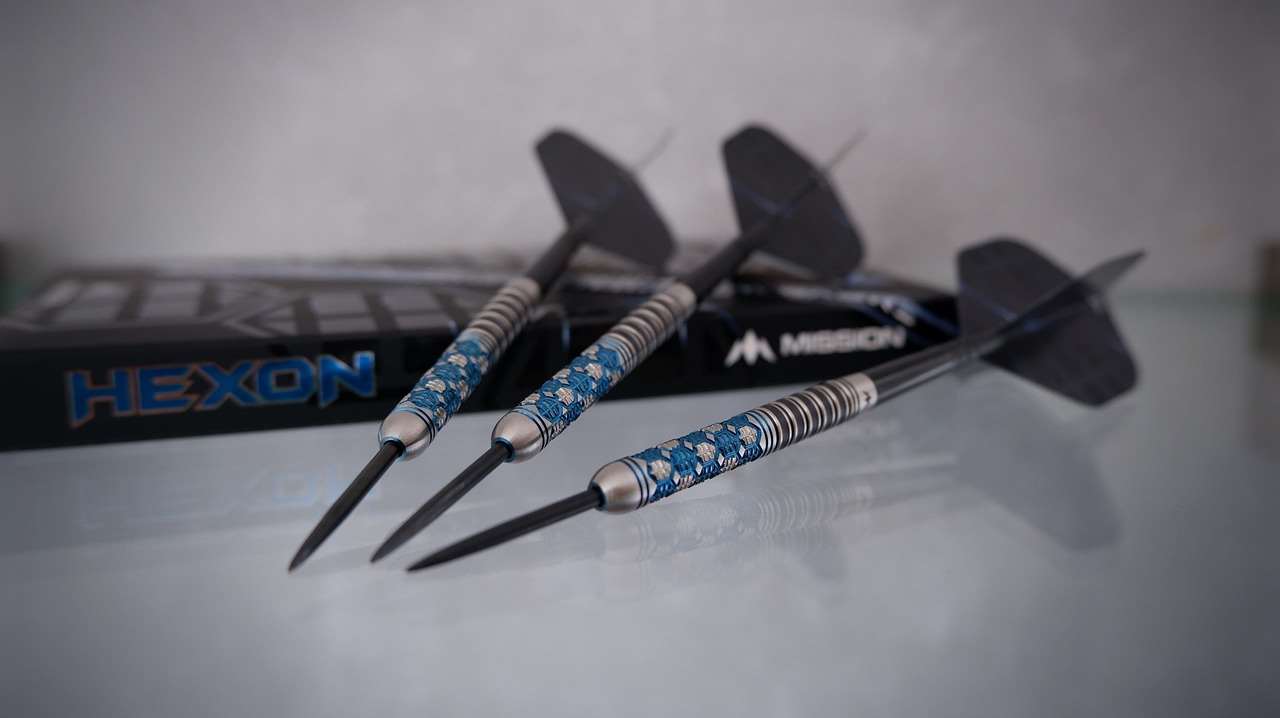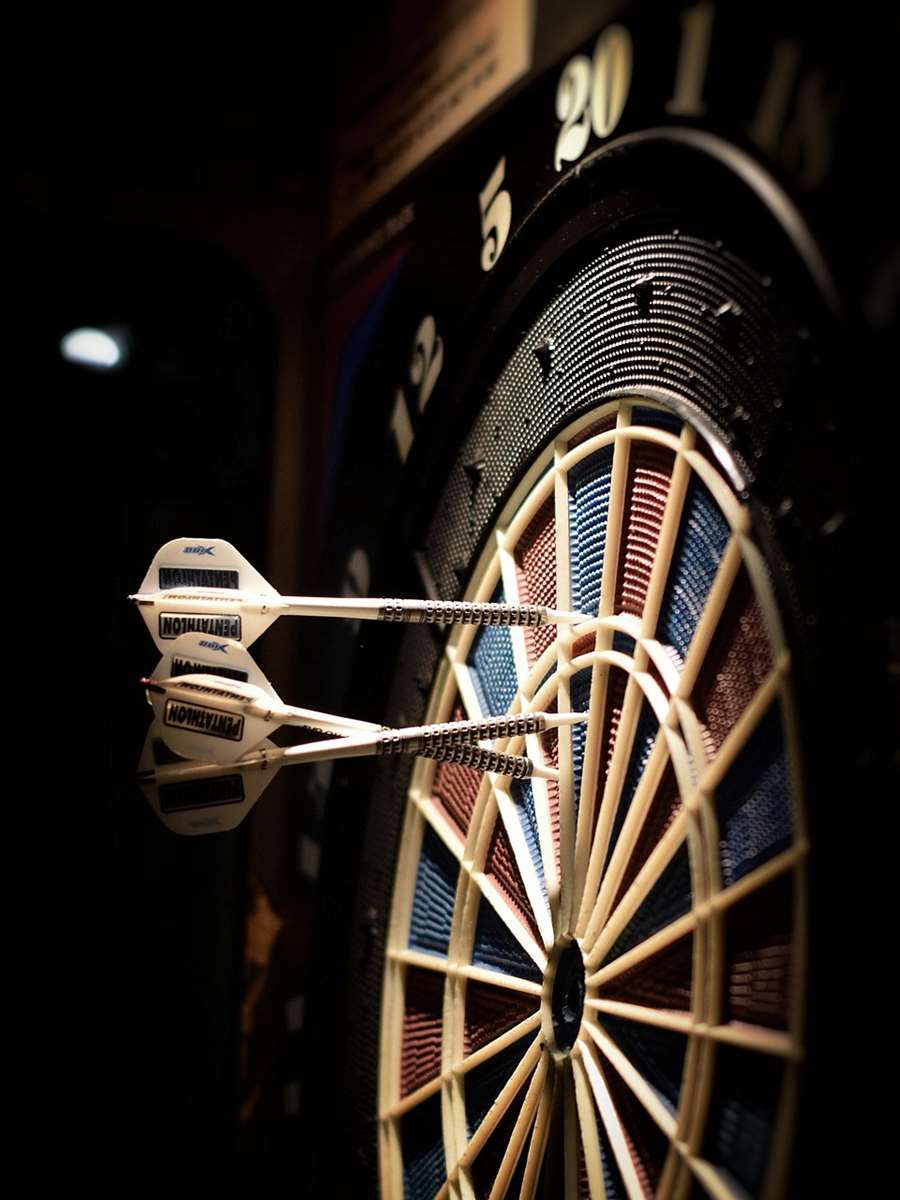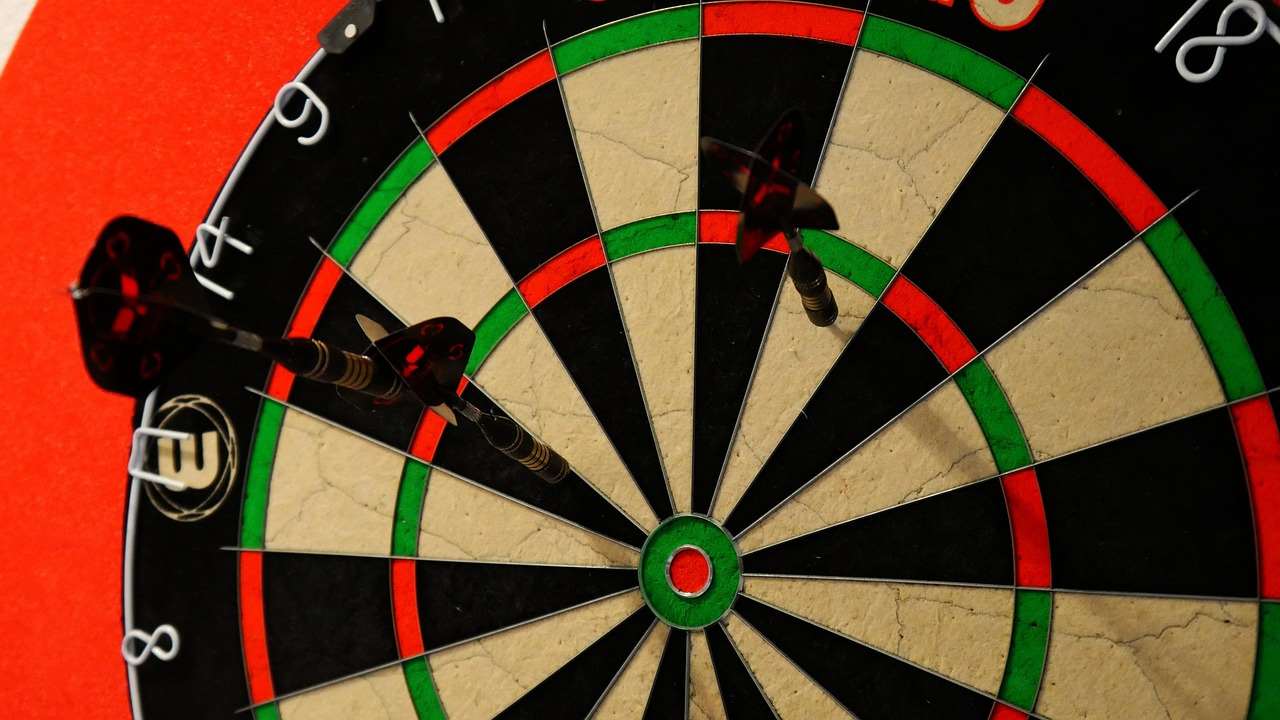Understanding the ideal weight for your sisal dartboard is crucial for ensuring it’s properly supported and that your darts stick consistently. This Sisal Dartboard Weight Guide breaks down the standard weights and offers tips on how to account for variations, ensuring your board lasts and your game is fair. You’ll also learn about mounting considerations and how board density affects play.
⚠️ Still Using Pen & Paper (or a Chalkboard)?! ⚠️
Step into the future! The Dart Counter App handles all the scoring, suggests checkouts, and tracks your stats automatically. It's easier than you think!
Try the Smart Dart Counter App FREE!Ready for an upgrade? Click above!
Understanding Standard Sisal Dartboard Weight
A standard sisal dartboard, designed for steel-tipped darts, typically weighs around 10 to 12 pounds (4.5 to 5.4 kilograms). This weight range is important because it ensures the board is heavy enough to withstand the impact of the darts without excessive movement or damage. It also provides a good density for the darts to penetrate and stay in place.
However, it’s important to note that there can be slight variations in weight depending on the manufacturer and the specific materials used. Some premium dartboards may be slightly heavier due to denser sisal or a more robust backing. Conversely, cheaper boards might be lighter, potentially affecting their durability and playability. When selecting a new dartboard, always check the product specifications for the weight to ensure it falls within the acceptable range.

When considering dartboard weight, it’s also useful to think about the overall construction. A heavier dartboard generally indicates a denser sisal fiber construction, which is a good sign of quality and longevity. Denser sisal means the holes created by darts will close up more effectively, extending the lifespan of the board. Factors affecting board weight are the sisal density, the materials used for the backboard and frame, and any additional features such as electronic scoring systems.
Why Does Sisal Dartboard Weight Matter?
The weight of your dartboard has several crucial implications for both its performance and longevity. Here’s a breakdown:
- Stability: A heavier dartboard is more stable and less prone to wobbling or moving when darts hit it. This is especially important if you’re mounting the board on a less-than-perfectly-stable surface.
- Dart Retention: A properly weighted dartboard, with dense sisal, offers better dart retention. Darts are less likely to bounce out, which can be frustrating and even dangerous.
- Durability: Generally, heavier dartboards are more durable because they are made with denser materials that can better withstand repeated impact.
- Fairness: Standard weight helps ensure a level playing field if you’re playing competitively. Lighter, less dense boards may warp or degrade more quickly, affecting scoring accuracy.
Therefore, understanding the importance of dartboard weight is key to enjoying a quality darting experience. You want to select a board that offers the best balance of stability, dart retention, and durability for your playing style and environment.
Mounting Considerations for Dartboard Weight
Proper mounting is critical for any dartboard, but it’s especially important to consider the weight of the board during installation. Here are some key considerations:
- Wall Type: The type of wall you’re mounting the board on will influence the type of hardware you need. For example, drywall will require anchors, while a solid wood or concrete wall will require different types of screws or bolts.
- Mounting Hardware: Use appropriate mounting hardware that is rated to support the weight of your dartboard. This typically includes heavy-duty screws, wall anchors (if needed), and a secure mounting bracket.
- Leveling: Ensure the dartboard is perfectly level during installation. This will prevent the board from shifting or wobbling and ensure fair play.
- Backboard Protection: Consider using a backboard or surround to protect the wall around the dartboard from stray darts. This can also help to dampen noise and vibration. You can Choose Best Dart Equipment to help protect walls.
By taking these mounting considerations into account, you can ensure your sisal dartboard is securely and safely installed, regardless of its weight.

Accounting for Weight Variations in Sisal Dartboards
As mentioned earlier, there can be some weight variation among different sisal dartboards. Here’s how to account for these variations:
- Check Specifications: Always check the manufacturer’s specifications for the weight of the dartboard before purchasing.
- Read Reviews: Read customer reviews to see if other users have commented on the weight or stability of the board.
- Physical Inspection: If possible, physically inspect the dartboard before buying it. Lift it and feel its density. A heavier, denser board is generally a better choice.
- Adjust Mounting: If your dartboard is slightly lighter than average, you may need to use more robust mounting hardware to ensure it’s securely attached to the wall.
Remember, a slightly lighter dartboard isn’t necessarily a deal-breaker, but you may need to take extra precautions to ensure it’s properly supported and doesn’t move excessively during play. Consider exploring the Best Dartboard Lighting Systems to enhance your playing experience.
Sisal Density and Its Impact on Weight
The density of the sisal fibers is a major determinant of a dartboard’s weight and overall quality. Here’s how density affects the playing experience:
- Dart Retention: Denser sisal provides better dart retention. The fibers are more tightly packed, which means they grip the darts more firmly and reduce bounce-outs.
- Self-Healing: Denser sisal has better self-healing properties. The fibers tend to close up more readily after being pierced by a dart, extending the life of the board.
- Reduced Wear: A denser sisal board will generally wear more slowly than a less dense board. It can withstand more use before showing signs of wear and tear.
- Consistent Scoring: A consistent density across the entire board ensures more accurate and fair scoring.

When comparing dartboards, look for those with a high sisal density. This is often reflected in the weight of the board, with heavier boards typically indicating denser construction. Don’t forget to think about LED Dartboard Lights Benefits while setting up your game room.
How to Test Sisal Density
While you can’t directly measure the density of a sisal dartboard without specialized equipment, here are a few ways to get a sense of its density:
- Visual Inspection: Look closely at the surface of the board. Can you see a lot of gaps between the fibers, or do they appear tightly packed together?
- Dart Test: Throw a few darts at different areas of the board. Do the darts stick easily and firmly, or do they bounce out frequently?
- Hole Closure: After removing the darts, observe how quickly the holes close up. Denser sisal will tend to close up more quickly.
- Weight Comparison: Compare the weight of the board to other similar models. A heavier board is generally a denser board.
Maintaining Optimal Weight Distribution in Your Sisal Dartboard
Even if your sisal dartboard starts at the ideal weight, its weight distribution can change over time due to wear and tear. Here are some tips for maintaining optimal weight distribution:
- Rotate the Board: Regularly rotate the dartboard to distribute wear evenly across the entire surface. This will help to prevent certain sections from becoming overly worn or compressed.
- Clean the Board: Clean the board periodically to remove dust and debris that can accumulate in the fibers. Use a soft brush or vacuum cleaner attachment.
- Avoid Moisture: Keep the board dry and avoid exposing it to excessive moisture, which can damage the sisal fibers and affect the weight distribution.
- Replace When Necessary: Even with proper care, a sisal dartboard will eventually wear out. When the board starts to show signs of significant wear, such as large holes or frequent bounce-outs, it’s time to replace it.

By following these tips, you can help to maintain the optimal weight distribution of your sisal dartboard and extend its lifespan.
The Role of Backboards and Surrounds in Supporting Sisal Dartboards
While the weight of the sisal dartboard is important, the role of backboards and surrounds in supporting the board and protecting the surrounding area should not be overlooked. Backboards and surrounds can provide extra support, especially if the wall you’re mounting the board on is not perfectly stable. They also help to protect the wall from stray darts, which can cause damage and create unsightly holes.
Here are some key benefits of using a backboard or surround:
- Wall Protection: Protects the wall from stray darts.
- Noise Reduction: Dampens the noise and vibration of darts hitting the board.
- Enhanced Stability: Provides extra support for the dartboard.
- Improved Aesthetics: Creates a more professional and visually appealing setup.
When choosing a backboard or surround, make sure it’s large enough to adequately protect the surrounding area. A larger surround will offer better protection, especially for beginner players who are more likely to throw stray darts. Be sure to choose the correct Types Optimal Dartboard Lighting so your game is well-lit.

Conclusion: Finding the Right Weight for Your Sisal Dartboard
In conclusion, understanding the Sisal Dartboard Weight Guide and its implications is crucial for ensuring a quality darting experience. A standard sisal dartboard should weigh between 10 and 12 pounds to provide stability, dart retention, and durability. While weight variations may occur, you can account for them by checking specifications, reading reviews, and adjusting the mounting hardware as needed. Sisal density plays a significant role in weight and performance, with denser boards generally offering better dart retention and longevity. Remember to rotate and clean your board regularly to maintain optimal weight distribution and extend its lifespan. By following these guidelines, you can choose a sisal dartboard that meets your needs and provides years of enjoyable gameplay. Get started on finding the perfect dartboard today!
Hi, I’m Dieter, and I created Dartcounter (Dartcounterapp.com). My motivation wasn’t being a darts expert – quite the opposite! When I first started playing, I loved the game but found keeping accurate scores and tracking stats difficult and distracting.
I figured I couldn’t be the only one struggling with this. So, I decided to build a solution: an easy-to-use application that everyone, no matter their experience level, could use to manage scoring effortlessly.
My goal for Dartcounter was simple: let the app handle the numbers – the scoring, the averages, the stats, even checkout suggestions – so players could focus purely on their throw and enjoying the game. It began as a way to solve my own beginner’s problem, and I’m thrilled it has grown into a helpful tool for the wider darts community.